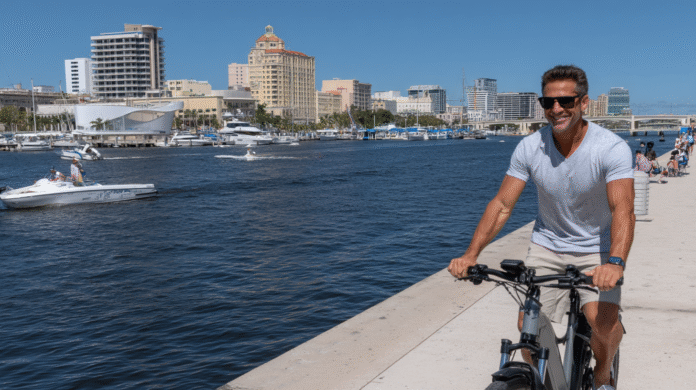Did you know electric bicycle sales in Florida have skyrocketed by over 240% since 2019? This huge increase has changed how people travel, commute, and explore in the state. With its sunny weather and flat terrain, Florida is a perfect place for electric cycling fans.
Florida e-bike laws have made it easier for riders to enjoy their electric bikes legally. Now, any bike with pedals and an electric motor under 750 watts is considered an electric bicycle. This gives riders more freedom than before.
Knowing the rules isn’t just about avoiding fines. It’s about enjoying Florida safely. Whether you’re riding on beachfront paths, city streets, or trails, knowing where you can ride is key.
This guide from EBikesUS.com covers everything you need to know. We’ll talk about classification systems, where you can ride, safety rules, and local laws. We aim to help you understand the rules so you can enjoy the ride.
Key Takeaways
- Electric bicycle sales in Florida have increased by over 240% since 2019
- Florida defines electric bicycles as having functional pedals and motors under 750 watts
- Recent regulatory updates have made it easier to legally ride electric bicycles
- Understanding local ordinances is essential as they may differ from state regulations
- Proper classification knowledge helps determine where you can legally ride
- Safety requirements vary based on bicycle classification and rider age
Table of Contents
Understanding Florida E-bike laws Definition and Classification
Florida has clear rules for electric bikes. There are three main types, each with its own rules for where and how you can ride. Knowing these rules is key for safe and legal riding in Florida.
How Florida Defines an Electric Bicycle (E-bike)
Florida law defines e-bikes as bikes with pedals and a motor under 750 watts. This makes them different from other vehicles on the road.
They must have functional pedals and a limited-power motor. Without pedals, it’s not an e-bike in Florida. The motor power keeps e-bikes like traditional bikes, not powerful vehicles.
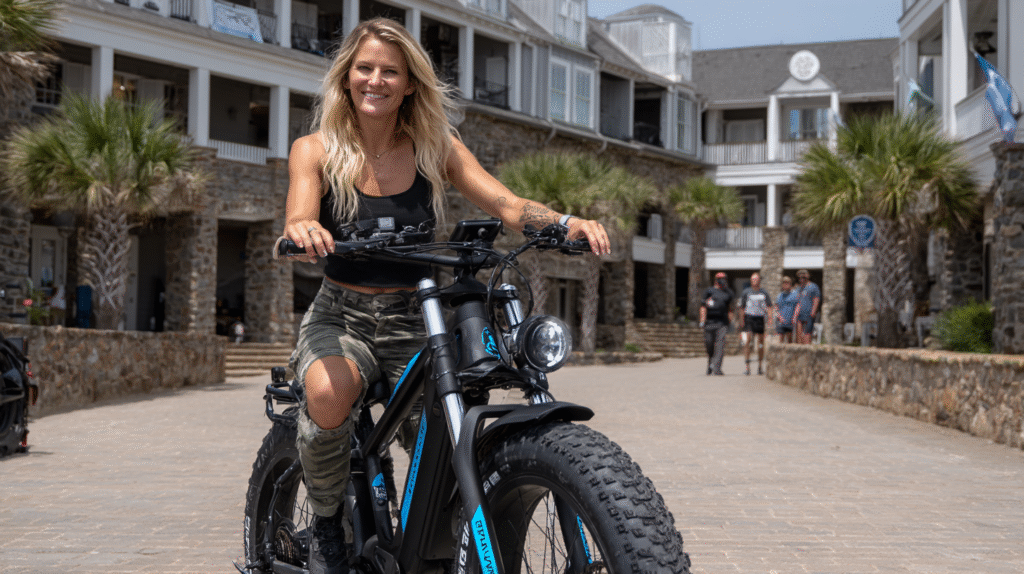
The Three-Tier Classification System
Florida uses a three-class system for electric bikes. Each class has its own rules for where and how you can ride.
Class 1 E-bikes help when you pedal and stop at 20 mph. They’re great for bike paths and trails.
Class 2 E-bikes have a throttle for extra speed but stop at 20 mph. They’re different from Class 1 because of the throttle.
Class 3 E-bikes help when pedaling and stop at 28 mph. They can go faster but face more riding restrictions.
Maximum Motor Power and Speed Restrictions per Class
All e-bikes in Florida have motors under 750 watts. This keeps them like bicycles but helps with riding.
Speed limits vary by class:
- Class 1 and 2 e-bikes: Maximum motor-assisted speed of 20 mph
- Class 3 e-bikes: Maximum motor-assisted speed of 28 mph
These limits are for motor help. You can pedal faster if you can. The motor stops helping when you hit the speed limit.
Distinguishing E-bikes from Mopeds and Other Motorized Vehicles
Many think e-bikes are like mopeds or motorcycles. But in Florida, they’re treated differently.
E-bikes don’t need registration, a driver’s license, or insurance. They’re seen as an extension of traditional bicycles, not motor vehicles.
| Feature | E-bikes | Mopeds | Motorcycles |
|---|---|---|---|
| Registration Required | No | Yes | Yes |
| Driver’s License | No | Yes | Yes (with motorcycle endorsement) |
| Insurance Required | No | Yes | Yes |
| Maximum Power | Less than 750W | 2,000W or less | No restriction |
| Pedals Required | Yes (fully operable) | Sometimes | No |
E-bikes are different from mopeds because of power (less than 750W) and pedals. They also have speed limits. If your bike is more powerful or doesn’t have pedals, it might be a moped or motorcycle.
Knowing about electric bike classes in Florida is important. It helps you ride legally and safely. It also tells you where you can ride based on your e-bike’s class. Always check your e-bike’s class before buying to make sure it fits your riding plans.
Licensing, Registration, and Insurance Requirements
E-bikes in Florida have simple rules that make owning and riding them easy. The state classifies e-bikes in a way that avoids a lot of red tape. This makes Florida a favorite spot for e-bike fans.
No State Requirement for Driver’s Licenses for E-bike Riders
One big plus of Florida’s e-bike laws is you don’t need a driver’s license to ride. You don’t need a driver’s license to operate any class of e-bike in Florida. This rule applies to all e-bike types—Class 1, Class 2, and Class 3.
This rule helps a lot of people. It includes:
- Teenagers who are not yet eligible for a driver’s license
- Individuals who have chosen not to obtain a driver’s license
- Those who may have lost their driving privileges but still need transportation
Florida treats e-bikes like regular bikes from a law standpoint.
E-bikes Exempt from Vehicle Registration in Florida
You also don’t need to register your e-bike with the state. E-bikes are explicitly exempt from vehicle registration requirements in Florida. This is different from motorcycles, mopeds, and other motorized vehicles.
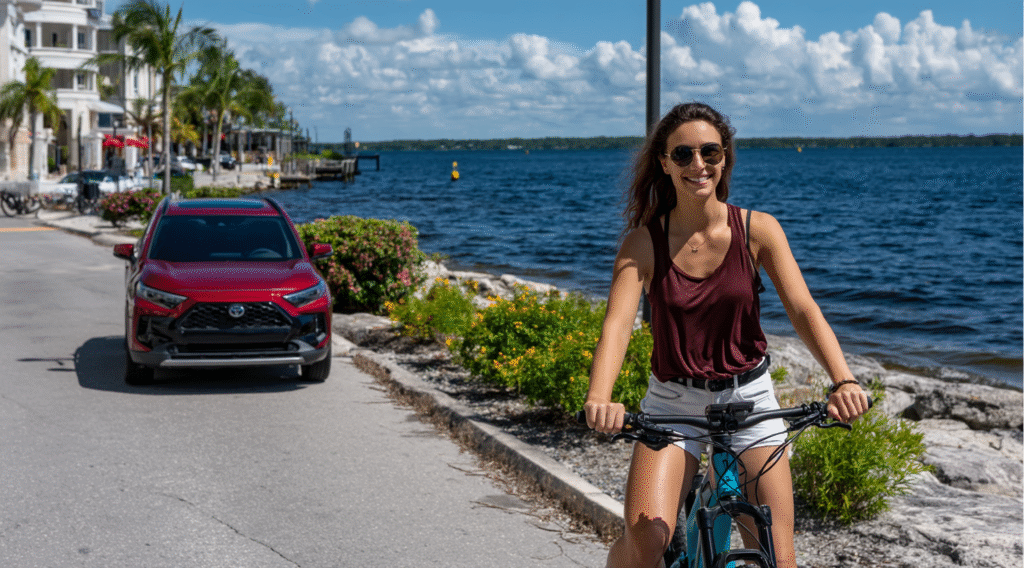
- No need to visit the Department of Motor Vehicles for registration
- No annual registration fees or renewal processes
- No requirement to display a license plate on your e-bike
The registration exemption is for all e-bikes that meet Florida’s rules. These include having pedals, a motor not over 750 watts, and speed limits for each class.
Insurance Mandates: What Florida Law Says (and Doesn’t Say)
Florida doesn’t require e-bike owners to have insurance. Florida does not legally require e-bike owners to carry insurance for their electric bicycles. This is different from cars and motorcycles, which must have minimum liability coverage.
Even though insurance isn’t required, it’s still a good idea for many riders. They choose to get coverage for several reasons:
- Liability protection in case you cause injury to someone else while riding
- Coverage for theft or damage to your e-bike
- Medical payment coverage for injuries sustained while riding
“While e-bike insurance requirements florida are non-existent from a legal standpoint, riders should consider their personal risk tolerance and the value of their investment when deciding whether to purchase coverage.”
Some insurance policies might cover e-bikes, but specialized e-bike insurance is also available. It’s offered by various providers.
Proof of Ownership and Manufacturer Labels
Even without registration, it’s smart to keep proof of ownership for your e-bike. Keep your purchase receipt and any warranty information in a safe place. This helps prove ownership if needed.
Florida law also requires e-bikes sold in the state to have a permanent manufacturer’s label. This label must show:
- The classification number (Class 1, 2, or 3)
- The motor’s maximum assisted speed
- The motor’s power output rating in watts
These labels help law enforcement check if your e-bike meets Florida’s rules. They also remind riders of their e-bike’s limits and the laws that apply.
If you buy a used e-bike, make sure the labels are there and clear. Without them, you might face problems with the law or in an accident.
For more info on e-bikes in the USA, including Florida’s rules, visit ebikesus.com. It has lots of resources for electric bicycle owners.
Age Restrictions for E-bike Riders in Florida
Florida has a unique policy on who can ride an electric bicycle. It’s important for families and riders to know these rules. This is especially true for those with young members interested in e-bikes.
No Minimum Age for Operating Most E-bikes
As of 2025, Florida law doesn’t set a minimum age for riding electric bicycles. This is a big change from before, when riders had to be at least 16. Now, anyone, including kids and teens, can ride Class 1, 2, or 3 e-bikes in the state.
This rule makes e-bikes similar to regular bikes in terms of age limits. It shows that electric bikes, especially those with lower power, can be okay for younger riders if used wisely.

Even without age limits, not all e-bikes are right for everyone. Parents should think about a few things before letting kids ride:
- The child’s size and ability to control the e-bike
- How well they know traffic rules and safety
- The type and power of the e-bike
- Where they will be riding (safe streets or busy roads)
Parental Guidance and Responsibility for Young Riders
Since there’s no minimum age, parents must decide if a child is ready for an e-bike. This means they have to make sure kids ride safely and responsibly.
Parents should check if their child can make quick decisions in traffic. Just because a kid can ride a regular bike doesn’t mean they’re ready for an e-bike’s extra speed and power. It’s best to introduce e-bikes slowly.
Many experts suggest setting your own age limits, even if the law doesn’t. For example, Class 1 e-bikes might be better for teens, while younger kids should stick to regular bikes until they get better at riding.
“The lack of legal age restrictions for e-bike riders in Florida places extra responsibility on parents to make informed decisions about their children’s readiness to handle these vehicles safely.”
Specific Considerations for Class 3 E-bike Operation by Minors
While Florida law lets anyone ride all types of e-bikes, parents should be extra careful with Class 3 models. These e-bikes can go up to 28 mph, which is too fast for most kids.
Experts and e-bike makers often say Class 3 e-bikes should only be for riders 16 or older. The high speeds and the chance of running into cars make them risky for younger riders.
Some places in Florida might have their own rules for Class 3 e-bikes that are different from the state’s. Always check local laws before letting minors ride these fast e-bikes.
| E-bike Class | Maximum Speed | Florida Legal Age | Recommended Minimum Age | Special Considerations |
|---|---|---|---|---|
| Class 1 | 20 mph | No minimum | 12-14 years | Pedal-assist only, moderate supervision recommended |
| Class 2 | 20 mph | No minimum | 14-16 years | Throttle-controlled, closer supervision advised |
| Class 3 | 28 mph | No minimum | 16+ years | High speed requires mature judgment and riding skills |
When introducing young riders to e-bikes, start with regular bikes. Then, move to Class 1 e-bikes with supervision before letting them ride alone. This gradual approach helps build the skills and judgment needed for safe riding.
Remember, Florida’s e-bike safety guidelines apply to riders of all ages. Riders under 16 must wear helmets, and everyone should wear safety gear. Teaching kids about traffic rules, signaling, and defensive riding is key before they ride e-bikes on public roads or paths.
Helmet Laws and Safety Gear Mandates
When you ride an electric bike in Florida, knowing the helmet laws is key. These rules help keep you safe and legal. They depend on your age and the type of e-bike you ride.
Mandatory Helmet Use for Riders Under 16 Years Old
In Florida, helmets are a must for all e-bike riders and passengers under 16. This rule applies to all bikes, including e-bikes. The helmet must meet federal safety standards and fit well.
Parents, remember this is not just a suggestion. It’s the law. Your child must wear a helmet, no matter the trip’s length or speed.
Not wearing a helmet can lead to fines. But, police usually teach first-time offenders instead of fining them. Wearing a helmet greatly lowers the risk of head injuries in accidents.
Helmet Recommendations for All Riders
Florida law only requires helmets for those under 16. But, safety experts say all riders should wear helmets. Your head is still vulnerable to injury, no matter your age.
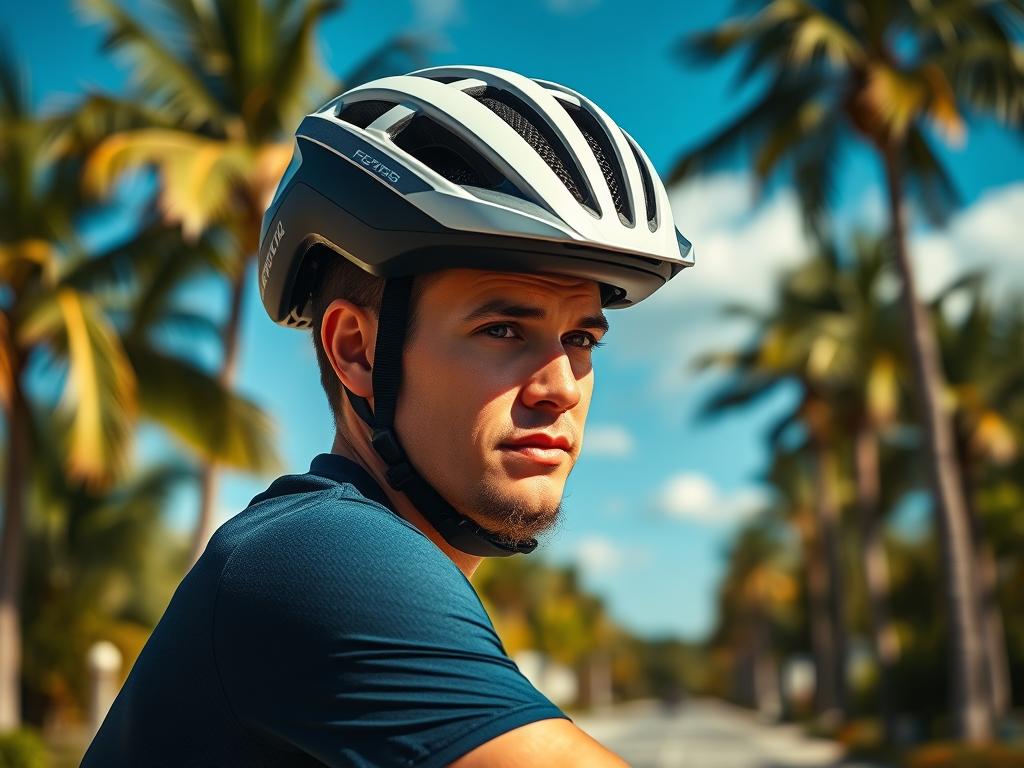
Choose a helmet that meets the Consumer Product Safety Commission (CPSC) standards. It should fit well, covering your forehead and stay snug but comfortable.
Many riders prefer helmets made for e-bikes. They offer extra coverage and visibility. Remember, helmets lose their protection over time and after impacts, so replace them often.
Florida’s Stance on Helmets for Class 3 E-bike Operators Over 16
Florida doesn’t require helmets for Class 3 e-bike riders over 16. This is different from some other states that require helmets for all Class 3 riders, no matter their age.
However, Class 3 e-bikes can go up to 28 mph. This speed increases the risk and severity of accidents. Safety experts still recommend helmets for these faster e-bikes, even though it’s not required in Florida for riders 16 and older.
Some local areas in Florida might have stricter helmet laws for Class 3 e-bikes. Always check local rules before riding in a new area, as they can be stricter than state laws.
“The difference between a minor injury and a life-altering brain trauma often comes down to one simple choice: wearing a properly fitted helmet. This is especially true on Class 3 e-bikes where speeds approach 30 mph.”
Required Lighting and Reflectors for Night Riding
Florida law requires special lights and reflectors for bikes, including e-bikes, at night. These rules are crucial for safety when it’s dark.
Your e-bike must have a white front light visible from at least 500 feet away. This helps others see you coming. You also need a red rear reflector visible from at least 600 feet when a car’s headlights hit it.
While not required by law, many experts suggest adding a flashing red light for more visibility. Reflective clothing, ankle bands, or helmet lights can also help you be seen better.
Florida’s e-bike safety rules are more than just laws. They’re the minimum you should follow to stay safe while riding. Good safety gear and habits can prevent serious injuries.
Where You Can Legally Ride Your E-bike in Florida
E-bikes are becoming more popular in Florida. It’s important to know where you can ride them legally. Florida’s laws are mostly friendly to e-bikes, giving riders many of the same rights as regular cyclists. Knowing these rules helps you plan your rides and avoid legal trouble.
Riding on Roadways and Adherence to Traffic Laws
In Florida, you can ride your e-bike on most public roads. You must follow the same traffic laws as regular bikes. This means riding with traffic, not against it.
You must obey all traffic signals and signs. This includes stopping at red lights and stop signs, yielding when needed, and using hand signals when turning or changing lanes.
E-bike riders have the same rights and responsibilities as other road users. You can take up a full lane when it’s safe, but usually, ride as far right as possible unless turning left, passing, or avoiding hazards.

Access to Bike Lanes and Bicycle Paths
Florida law lets e-bike riders use bike lanes and paths just like regular cyclists. You can ride your electric bike in any bike lane along roads in the state.
Protected bike paths and dedicated cycling areas are also open to e-bikes. These paths offer safer rides away from busy roads and can be found in many Florida cities and communities.
While all e-bike classes are generally allowed in bike lanes, some places might have specific rules. Class 3 e-bikes, with their higher speeds, might face more restrictions in certain areas for safety reasons.
Rules for Riding E-bikes on Sidewalks (and Local Exceptions)
Florida state law lets e-bikes on sidewalks in most places. When on sidewalks, you must yield to pedestrians and give a signal before passing them.
Local areas can decide to ban e-bikes on sidewalks. For example, some busy areas or downtowns might not allow bikes, including e-bikes, on sidewalks.
When on sidewalks, ride at a reasonable speed and be careful around pedestrians, especially in crowded spots. Remember, pedestrians always have the right-of-way on sidewalks, and you should avoid making the area unsafe.
E-bike Usage on Multi-Use Trails and in State/Local Parks
Florida has many multi-use trails and pathways for e-bike riders. The state’s trail network is great for exploring natural areas and scenic routes on your electric bike.
Trail access often depends on your e-bike’s class. Class 1 and Class 2 e-bikes (limited to 20 mph) are usually welcome on most trails in Florida. However, Class 3 e-bikes might face restrictions on some trails because of their higher speeds.
State parks in Florida generally allow e-bikes where regular bikes are permitted. The Florida Department of Environmental Protection sees e-bikes as bicycles, giving them access to trails and paths in state parks.
Local parks might have their own rules for e-bike access. Some county or city parks might restrict certain e-bike classes or limit them to specific areas. Always check the rules for each specific park or trail system before riding, as regulations can vary a lot.
Beach access for e-bikes varies by location. Many coastal communities have specific rules about bicycle and e-bike use on beaches. Some allow riding on hard-packed sand during certain hours, while others ban it entirely.
University campuses across Florida often have their own rules for transportation. Many welcome e-bikes as a green alternative to cars, but might have specific rules about where they can be ridden and parked.
For the best experience on Florida’s e-bike trails, always follow trail etiquette. Keep right except when passing, control your speed in crowded areas, and be polite to other trail users. This helps ensure continued electric bicycle trail access throughout Florida for years to come.
Speed Limits and Operational Rules for E-bikes
Knowing the speed limits for e-bikes in Florida is key to staying legal while riding. The state has rules for how fast you can go based on your e-bike’s type. These rules help keep riders safe and make sure everyone can use public spaces.
Maximum Assisted Speed for Class 1 and Class 2 E-bikes
If you have a Class 1 or Class 2 e-bike in Florida, you can’t go faster than 20 miles per hour with the motor’s help. Once you hit this speed, the motor stops assisting.
Class 1 e-bikes only work when you’re pedaling and stop at 20 mph. You can pedal faster, but the motor won’t help you go beyond that.
Class 2 e-bikes have a throttle and must stop assisting at 20 mph. The throttle lets you use the motor without pedaling, but the speed limit is the same.
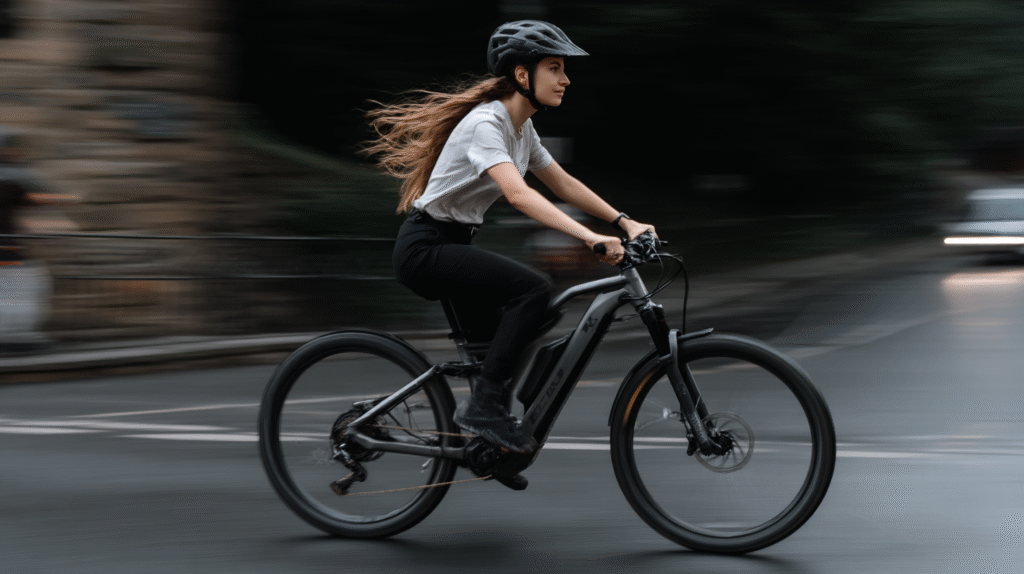
Maximum Assisted Speed for Class 3 E-bikes
Class 3 e-bikes in Florida can go up to 28 miles per hour with motor help. These e-bikes are pedal-assist only, meaning the motor only kicks in when you’re pedaling.
Class 3 e-bikes can ride on many roads, but some places might not let them. This is because they can go faster.
Even on a Class 3 e-bike, the motor stops helping at 28 mph. You have to pedal faster than that on your own.
Obeying Posted Speed Limits and Safe Riding Practices
Even if your e-bike can go fast, you must follow the speed limits. The law doesn’t let you ignore these limits, even if your e-bike can go faster.
When you’re near pedestrians, slow down. It’s best to ride no faster than twice walking speed, about 6 mph.
Always control your e-bike. Adjust your speed based on the weather, road conditions, traffic, and if there are pedestrians around.
Prohibition of Modifying E-bikes to Exceed Legal Speed/Power Limits
Florida law says you can’t make your e-bike go faster than allowed. If you change your e-bike to go over 28 mph or make the motor stronger than 750 watts, it’s no longer an e-bike.
Modified e-bikes that go too fast are seen as motorcycles or mopeds. This means you’ll need a motorcycle license, insurance, and to register your vehicle.
Police can tell if an e-bike has been modified. Riding a modified e-bike without the right license can lead to fines and tickets.
| E-bike Class | Maximum Assisted Speed | Motor Activation | Power Limit | Legal Status |
|---|---|---|---|---|
| Class 1 | 20 mph | Pedal-assist only | 750W maximum | Legal on most bike paths |
| Class 2 | 20 mph | Throttle or pedal-assist | 750W maximum | Legal on most bike paths |
| Class 3 | 28 mph | Pedal-assist only | 750W maximum | Some path restrictions |
| Modified beyond limits | Exceeds 28 mph | Any type | Exceeds 750W | Classified as motorcycle |
Knowing and following Florida’s e-bike speed limits helps you enjoy riding without legal trouble. These rules let e-bike riders have fun while keeping everyone safe.
Understanding E-bike Equipment and Labeling Requirements
Proper equipment and accurate labeling are key for e-bike compliance in Florida. Many riders miss these important details. Knowing these rules helps avoid fines and keeps you safe on the road.
Mandatory E-bike Labeling
Florida law requires e-bikes to have specific labels on the frame. This labeling helps law enforcement and others know what type of e-bike you’re riding.
Every e-bike sold or used in Florida must have a clear label. It should include:
- Classification number (Class 1, 2, or 3)
- Motor wattage (must not exceed 750W)
- Maximum assisted speed (20 mph for Class 1 and 2, 28 mph for Class 3)
Manufacturers usually put these labels on. But if you buy a used e-bike, check that the labels are there and easy to read. Riding without the right labels can lead to fines.
Requirements for Functional Brakes
Your e-bike must have brakes that meet certain standards. Florida law says brakes should stop the bike in 25 feet at 10 mph on dry, level ground.
Most e-bikes come with brakes that meet this standard. But, it’s important to keep them in good shape. Check your brake pads and make sure your brakes work well. E-bikes are heavier and go faster than regular bikes, so good brakes are crucial.
Another important rule is that your e-bike must have functional pedals. If you remove or disable the pedals, your e-bike is not legal in Florida. This could make it seem like a motorized vehicle, leading to different rules.
Other Recommended Safety and Operational Equipment
While not required by law, some extra equipment can make your ride safer and more enjoyable. Here are some safety items recommended for Florida e-bike riders:
| Equipment | Purpose | Recommendation Level | Benefits |
|---|---|---|---|
| Bell or Horn | Alerting pedestrians and other cyclists | Highly Recommended | Prevents collisions on shared paths |
| Rearview Mirrors | Monitoring traffic behind you | Strongly Recommended | Improves lane change safety |
| Reflective Clothing | Increasing visibility to drivers | Essential for Night Riding | Reduces accident risk by 33% |
| Cycling Gloves | Improving grip and control | Recommended | Reduces hand fatigue on longer rides |
| Smartphone Mount | Navigation assistance | Optional but Useful | Allows hands-free route guidance |
Battery safety is also key, even though Florida laws don’t specifically cover it. Always use the charger recommended by the manufacturer. Avoid extreme temperatures when charging your battery.
For rides in busy areas, extra lights can help you be seen better. Higher lumens on front lights and more rear lights can make you more visible, especially at dawn or dusk.
Regular maintenance is important for your e-bike’s safety and longevity. Check your brakes, tire pressure, and electrical parts often. This helps prevent breakdowns while you’re riding.
When buying a new e-bike in Florida, make sure the seller provides all necessary labels and documents. Reputable dealers at E-bikes in USA know the rules and can help you find a compliant e-bike.
Navigating Local Ordinances: City and County E-bike Rules
Florida has statewide e-bike laws, but cities and counties can make their own rules. These local florida e-bike rules are key for safe and legal riding.
The Power of Local Municipalities to Regulate E-bikes
Cities and counties in Florida can set their own e-bike rules. These rules might limit where you can ride or add extra safety measures.
Common Areas Where Local Rules May Differ
Beach access, downtown areas, and tourist spots often have special electric bicycle regulations florida residents need to know. Many coastal communities restrict e-bikes on boardwalks and beach paths during peak hours.
Importance of Checking Specific City/County E-bike Ordinances
Before riding in a new area, check the local government website or call the city clerk’s office. Local bike shops can also give insights about area-specific rules.
Examples of Varying Local Regulations in Florida
St. Augustine and Sarasota restrict e-bikes on certain sidewalks to protect pedestrians in busy tourist areas. Juno Beach prohibits vehicles over 750 watts on sidewalks and bike paths for safety reasons.
Miami has designated e-bike zones in some parks while prohibiting them in others. Orlando features special e-bike parking areas downtown but restricts riding on some paths around Lake Eola.
Remember that florida e-bike rules can change, so staying informed about local ordinances will help you ride legally wherever you go in the Sunshine State.


